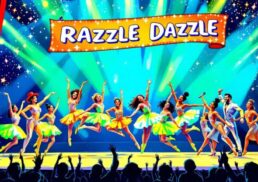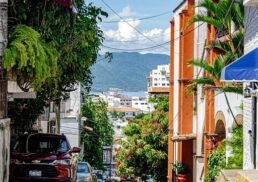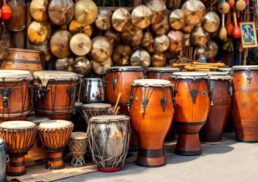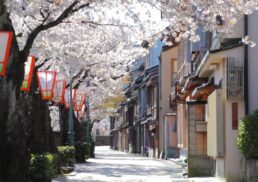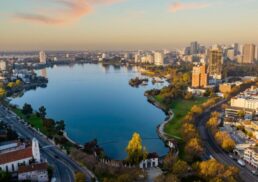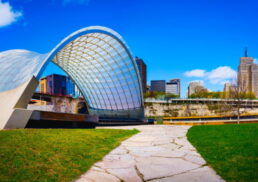Living in New York New York is a unique adventure full of opportunities and hurdles. This article dives into the nuts and bolts of life in the city, covering costs, transportation, neighborhoods, and the fast-paced lifestyle. From budgeting to finding your ideal community, discover what living in NYC truly entails.
Table of Contents
Key Takeaways
Life in NYC is packed with diversity and culture but comes with high living costs, especially for housing and everyday expenses.
Public transportation is essential for getting around the city, but it can be crowded and less accessible in some areas.
Finding the right neighborhood is crucial, as each borough offers its own vibe and lifestyle, impacting commuting options and community feel.
An Overview of Life in New York City

Living in New York City, the most populous city, offers a unique experience, with over 8 million residents packed into just 302.6 square miles, making it one of the most densely populated populous city in the world. The greater metropolitan area, encompassing parts of New Jersey, Long Island, and even upstate New York, swells to over 23.5 million people. This sheer number of residents means that every corner of the city is alive with activity and energy.
New York City is divided into five boroughs: Manhattan, Brooklyn, Queens, The Bronx, and Staten Island. Each borough has its own distinct personality and cultural vibe. The city’s diversity is one of its greatest strengths, with countless cultures, languages, and cuisines represented. It’s no wonder that NYC is often referred to as a melting pot. The cultural energy here is palpable, and it’s a place where you can find opportunities and experiences that are hard to come by in other cities.
NYC’s reputation as the City That Never Sleeps is well-earned. From bustling streets to vibrant nightlife, there’s always something happening—be it a late-night Broadway show, a 3 AM pizza slice, or people-watching in Times Square. The city’s constant activity is both exhilarating and exhausting.
Despite the limited personal space with a high population density of 29,303.2 people per square mile, many New Yorkers embrace their fast-paced lifestyle.
The Cost of Living in NYC

Anyone considering moving to New York City should know that its cost of living is significantly higher than the national average. Housing, groceries, and entertainment all come with premium price tags, impacting financial stability and often leading residents to live paycheck to paycheck.
Daily expenses in NYC add up quickly. Simple things like haircuts, groceries, and daily experiences are often pricier than in other cities. However, this cost comes with access to world-class amenities, dining, and cultural experiences. Grasping the cost of living is vital for anyone planning to call the Big Apple home.
To break it down further, let’s explore three major components of living costs in New York City: housing, groceries and utilities, and dining out and entertainment.
Housing Costs
Housing in New York City is notoriously expensive, with the average rent for a one-bedroom apartment in Manhattan at $4,775. Even a 420-square-foot unit on the Upper West Side can cost around $3,000 per month, pushing many residents to seek more affordable options outside Manhattan.
Living outside Manhattan can be more affordable, with neighborhoods in Brooklyn, Queens, and parts of the Bronx offering more reasonable rents. For example, the median gross rent in NYC is $1,579, which is more manageable. These areas offer more living space and community vibe but may come with longer commute times.
Broker fees, typically 15% of the annual rent, can significantly add to the upfront cost of moving into a new apartment. Despite these challenges, many find the variety and vibrancy of NYC neighborhoods worth the high cost.
Grocery and Utility Expenses
Grocery shopping in New York City can be shocking for newcomers. A carton of 12 organic eggs in Manhattan can cost up to $9.49. Supermarkets are generally smaller than the average American grocery store, limiting selection and making shopping more challenging.
Utilities also come at a premium, with high electricity bills, especially during hot summer months when air conditioning is essential. While water is typically billed at a flat fee, other utilities can add up quickly.
With a sales tax rate of 8.87%, everyday expenses can feel burdensome. Despite these costs, many residents manage their budgets by shopping at local markets and taking advantage of sales.
Dining Out and Entertainment
Dining out in New York City is a culinary adventure, offering an extraordinary variety of international cuisine from authentic Italian to iconic New York-style pizza. However, it can be expensive. For instance, a meal at a Michelin-starred restaurant like Per Se or Gabriel Kreuther is splurge-worthy but comes with a hefty price tag.
Nightlife and entertainment in NYC are unparalleled, offering cocktail bars, jazz clubs, Broadway shows, and rooftop parties. However, these experiences often come with high costs, with average cocktail prices ranging from $18 to $22 and tipping customary at 18% to 20%.
Despite the expense, the vibrant social scene and endless entertainment options make living in NYC exciting.
Navigating the City: Transportation

Getting around New York City is both convenient and challenging. The city’s extensive public transportation system—including the subway, buses, Amtrak, Long Island Railroad, and Metro-North Railroad—makes it easy to access most attractions without needing a car, a significant advantage given the city’s notorious traffic and limited parking.
Public transit makes living in NYC easier but comes with its own challenges. Subway stations can be crowded, and delays are not uncommon. However, for many residents, the benefits of public transportation outweigh the inconveniences.
Subway System
The subway system is the lifeblood of New York City, with more than 3.6 million daily riders, making it one of the most efficient ways to get around. Despite pandemic challenges, ridership has stabilized, reflecting its importance. A single ride costs $2.75, making it an affordable option for most New Yorkers.
Accessibility remains a work in progress, with only 25% of subway stations ADA compliant as of 2022. Ongoing improvements aim to make the system more accessible for everyone.
Overall, the subway is a reliable and cost-effective way to navigate the city, though it can be crowded and occasionally delayed.
Biking and Walking
Biking and walking are popular ways to get around New York City. The city has added over 1,000 miles of bike lanes, making it safer and more accessible for cyclists. Walking is also a great way to explore neighborhoods and green spaces, with many residents opting for short commutes.
Crowded city streets can be challenging, especially in busy areas like Times Square, requiring patience and agility. Despite this, many New Yorkers find biking and walking convenient and enjoyable ways to experience the city.
Finding Your Ideal Neighborhood
Choosing the right neighborhood is crucial for anyone moving to New York City. The city offers a diverse range of neighborhoods catering to different lifestyles and budgets. Whether seeking vibrant nightlife, a family-friendly environment, or an artistic community, there’s a neighborhood for you.
Factors to consider when selecting a neighborhood include commute times, local amenities, and lifestyle needs. Public transport is significant, as nearly 50% of residents use it to commute to work.
Let’s explore some of the key neighborhoods in Manhattan, Brooklyn, Queens, and Staten Island.
Manhattan
Manhattan, the heart of New York City, is home to iconic landmarks like Central Park, the Empire State Building, and Wall Street. The borough offers neighborhoods with unique characteristics. For instance, Battery Park City is family-friendly with attractions like Rockefeller Park and playgrounds.
However, Manhattan apartments are typically smaller and more expensive than other boroughs. Despite the smaller living spaces, many are drawn to Manhattan for its vibrant city life and proximity to major attractions.
Brooklyn
Brooklyn is known for its artistic vibe and trendy neighborhoods like Williamsburg and Park Slope. Williamsburg, once an artists’ haven, now attracts young creatives with its shops and nightlife. Park Slope is popular among families and young professionals due to its proximity to Prospect Park and local venues.
Brooklyn offers a mix of old and new, with historic brownstones alongside modern developments. The borough’s diverse neighborhoods and cultural scene make it a popular choice for many New Yorkers.
Queens and Staten Island
Queens and Staten Island offer unique living experiences compared to Manhattan and Brooklyn. Long Island City in Queens features modern apartments and waterfront parks, making it an attractive option for those who want to be close to Manhattan without the high costs, also known for its proximity to cultural hubs and green spaces.
Staten Island provides a more suburban feel while still offering access to the city via the Staten Island Ferry. This borough is ideal for those seeking a quieter environment with the convenience of city life just a ferry ride away.
Adjusting to the NYC Lifestyle
Adjusting to life in New York City can be a whirlwind experience. The city’s fast pace and direct communication style can overwhelm newcomers. New Yorkers are known for their fast walking and busy interactions, reflecting the city’s dynamic lifestyle. It’s a place where everyone is always on the go, and slow salutations are rare.
Living in NYC often requires a significant adjustment in social habits and personal style. The city’s diverse social scene makes it easier to find your niche and connect with like-minded individuals. However, adapting to the challenges and toughening up is essential for thriving in this bustling metropolis.
Making Friends and Socializing
Making friends in New York City can initially seem daunting due to its size and fast pace. However, NYC offers numerous opportunities to meet new people through social clubs and events based on shared interests. Whether you’re into sports, arts, or technology, there’s likely a group or meetup that matches your interests. This vibrant social scene means you can always find a new circle of friends or professional contacts.
Happy hours and neighborhood events are also excellent ways to connect with others. Many neighborhoods host regular events that bring the community together, providing a perfect backdrop for socializing and networking. The city’s dynamic environment ensures there are always new people to meet and experiences to share.
Dealing with Crowds and Noise
Dealing with crowds and noise is part and parcel of living in New York City. The crowded streets, especially in bustling areas like Midtown Manhattan during the holiday season, can be overwhelming. Waiting in lines for a popular restaurant or a subway ride is often compared to an Olympic sport. New Yorkers have developed strategies to cope, such as timing their outings to avoid peak hours.
The best advice for dealing with the constant hustle and bustle is to embrace it. Use noise-canceling headphones, find quieter spots in the city like small parks or libraries, and remember that the energy and excitement of the city are part of what makes living in NYC so unique.
Weather and Seasons in New York City

New York City experiences four distinct seasons, each bringing its own charm and challenges. Summers can be hot and humid, with temperatures often reaching above 95°F, particularly in July. Despite the heat, summer is a great time to enjoy outdoor activities in places like Central Park and Prospect Park. The abundance of green spaces provides a welcome respite from the urban heat.
Winters, on the other hand, can be quite frigid, with average temperatures around 34°F in January and occasional snowfalls averaging close to 30 inches per year. The holiday season brings a magical atmosphere to the city, with events like the Rockefeller Center tree lighting and New Year’s Eve at Times Square drawing millions of visitors.
Spring and fall offer more moderate temperatures and beautiful scenery, making them ideal times to explore the city’s various neighborhoods.
Learn more, Seasons in New York City: Weather and Climate.
Employment and Job Market
New York City’s job market is as diverse as its population. With approximately 472,000 job openings as of December 2023, the city offers numerous opportunities across various industries. However, it’s also known for its high competition and long hours, making it essential for job seekers to be prepared and persistent.
The city’s economy encompasses a wide range of careers, including finance, healthcare, and the arts. Job opportunities are particularly abundant in sectors such as finance, private education, healthcare, and technology. Whether you’re looking for a career on Wall Street or in a creative field, NYC’s dynamic job market has something to offer.
High-Demand Industries
Certain industries in New York City are in high demand, driving the local economy. Wall Street remains a significant force in the financial sector, offering lucrative job opportunities. Additionally, the fields of private education, healthcare, and technology continue to grow, providing a range of career options for residents.
These high-demand industries not only offer excellent job opportunities but also contribute to the city’s overall economic stability. For those with the right skills and qualifications, NYC can be a land of professional growth and success.
Average Salaries and Income Requirements
Living comfortably in New York City requires a substantial income. For a family of four, the average annual salary needed is about $126,000. Single adults need to earn around $53,000 to live comfortably, while those with roommates should expect to make at least $60,000 annually. Many residents find themselves juggling multiple jobs to meet these income requirements.
Despite the high cost of living, those who earn a salary of $150,000 or more can enjoy a high quality of life in NYC. Understanding these financial requirements is crucial for anyone planning to live in the city, as it helps set realistic expectations and goals.
Health and Wellness
Health and wellness are important considerations for anyone living in New York City. The city’s healthcare system is characterized by high costs, making health insurance a necessity. NYC Health + Hospitals operates 11 public hospitals and numerous community-based clinics, ensuring that residents have access to medical care regardless of their ability to pay or immigration status.
In addition to healthcare facilities, the city offers numerous parks and green spaces that contribute to residents’ overall well-being. Central Park, Bryant Park, and Prospect Park are just a few examples of the many recreational areas available. Despite NYC ranking low for green space per resident, these parks provide essential breathing room and opportunities for outdoor activities.
Healthcare Facilities
Having health insurance in New York City is essential due to the high costs of medical treatment. NYC Health + Hospitals provides care regardless of a patient’s ability to pay, offering a safety net for those without insurance. Services like ExpressCare offer 24/7 accessibility for non-emergency issues, making healthcare more convenient for busy New Yorkers.
For newcomers, it’s advisable to extend local health insurance to an international option if available. This can help cover unexpected medical expenses and provide peace of mind in a city where healthcare costs can escalate quickly.
Parks and Green Spaces
New York City’s green spaces are a vital part of city life, offering residents a chance to escape the urban hustle and bustle. Central Park is the most notable, attracting around 40 million visitors annually. The park provides a range of recreational activities, from jogging paths to boating and picnicking areas.
In addition to Central Park, the city boasts over 1,700 parks, playgrounds, and recreation facilities overseen by the New York City Department of Parks and Recreation. Despite the city’s low ranking for green space per resident, these areas are cherished by New Yorkers and play a crucial role in enhancing the quality of life.
Cultural and Recreational Activities
New York City is a cultural hub, offering a plethora of activities and experiences. The city’s diverse population is reflected in its international food options, cultural tours, and vibrant neighborhoods. Whether you’re exploring the street art scene in Bushwick or enjoying the views in Dumbo, there’s always something new to discover.
The city’s entertainment options are equally impressive. From Broadway shows to comedy clubs and live music venues, NYC offers endless opportunities for fun and relaxation. The cultural richness of the city ensures that residents and visitors alike can always find something to pique their interest.
Museums and Art Galleries
New York City is home to some of the world’s most renowned art institutions. Museums like the Guggenheim, the New Museum, and the Museum of Modern Art (MoMA) feature extensive collections of contemporary and modern art. These institutions offer not only visual delights but also educational programs and special exhibitions.
In addition to the major museums, the city is dotted with smaller art galleries that showcase local artists and diverse styles. These galleries enrich the city’s cultural landscape and provide platforms for emerging talent.
Whether you’re an art aficionado or just curious, NYC’s art scene has something for everyone.
Festivals and Events
New York City hosts a variety of festivals and events throughout the year, drawing millions of visitors and residents alike. Major annual events include New Year’s Eve at Times Square, the Rockefeller Center tree lighting, and the Macy’s Thanksgiving Day Parade. These events bring a festive atmosphere to the city and offer unique experiences.
Cultural events like the Tribeca Film Festival and the Lunar New Year Parade celebrate the city’s diversity and provide opportunities for community engagement. While attending these events can be challenging due to large crowds and long lines, the excitement and energy they bring make them well worth it.
Challenges of City Living
Living in New York City comes with its fair share of challenges. The high cost of living is a significant hurdle for many residents, impacting their quality of life and financial stability. Housing costs are particularly steep, with many people juggling multiple jobs to cover their expenses. Additionally, living spaces in NYC tend to be smaller and can come with various maintenance issues.
The city also faces cleanliness challenges. Dirty streets and occasional pest sightings are common complaints among residents. Trash and sanitation issues are prevalent, with piles of trash bags often seen outside apartment buildings.
Despite these challenges, many New Yorkers find ways to adapt and thrive in their day to day life in New York State urban environment.
Homelessness and Safety Concerns
Homelessness is a visible issue in New York City, with thousands of individuals living in shelters or on the streets. The number of homeless individuals has increased following the COVID-19 pandemic, making the issue more pronounced. Certain neighborhoods, like Brownsville and Hunts Point, have higher crime rates, which can impact residents’ sense of safety.
To stay safe, residents are advised to remain vigilant, especially when walking alone at night. Avoiding poorly lit or deserted areas can help mitigate safety concerns.
Despite these challenges, many neighborhoods are safe and vibrant, contributing to the overall appeal of living in NYC.
Apartment Maintenance and Management
Apartment maintenance and management can be a source of frustration for New York City residents. Many face challenges with responsive maintenance, impacting their living experience. Common issues include broken fixtures, cracks in walls, and faulty appliances. These problems can lead to decreased tenant satisfaction and a stressful living environment.
Building management can also be neglectful or mistreat properties, adding to tenants’ frustrations. Despite these challenges, diligent apartment hunting and careful selection of property managers can help mitigate some of these issues.
Being aware of potential maintenance concerns is essential for anyone planning to rent in NYC.
Summary
Living in New York City is a unique experience filled with both excitement and challenges. The city’s vibrant culture, diverse neighborhoods, and endless opportunities make it a dream destination for many. However, the high cost of living, crowded streets, and maintenance issues can be significant hurdles.
Despite these challenges, the rewards of living in NYC often outweigh the drawbacks. The city’s energy, opportunities, and cultural richness provide a lifestyle that is hard to match. Whether you’re drawn to the bustling streets of Manhattan or the artistic vibe of Brooklyn, New York City offers something for everyone. Embracing the city’s challenges and finding your place within its vast landscape can lead to a rewarding and fulfilling experience.
Frequently Asked Questions
What is the average rent for a one-bedroom apartment in Manhattan?
The average rent for a one-bedroom apartment in Manhattan is around $4,775. Just be prepared to shell out some serious cash if you’re looking to live there!
How do New Yorkers typically commute?
Most New Yorkers rely on public transportation for their daily commute, with nearly 50% opting for subways and buses. It’s a fast and efficient way to get around the bustling city!
What are some of the high-demand industries in NYC?
If you’re looking for booming sectors in NYC, finance, healthcare, private education, and technology are where the action’s at! These industries are thriving and often searching for fresh talent.
How much annual income is needed for a family of four to live comfortably in NYC?
To live comfortably in NYC, a family of four typically needs around $126,000 a year. That’ll help cover the high living costs and give you some breathing room!
What are some major annual events in New York City?
You can’t miss the epic New Year’s Eve celebration at Times Square, the stunning Rockefeller Center tree lighting, and the iconic Macy’s Thanksgiving Day Parade in NYC! They’re definitely highlights of the year!

